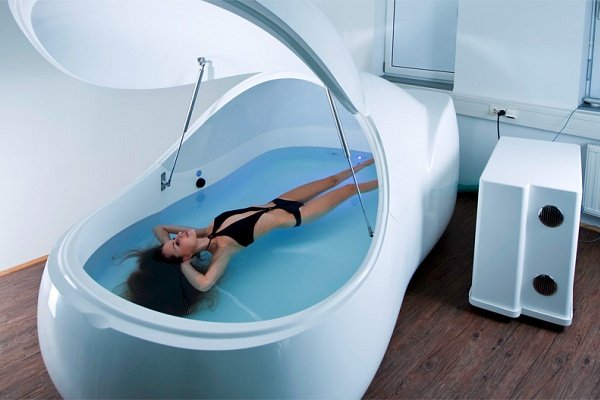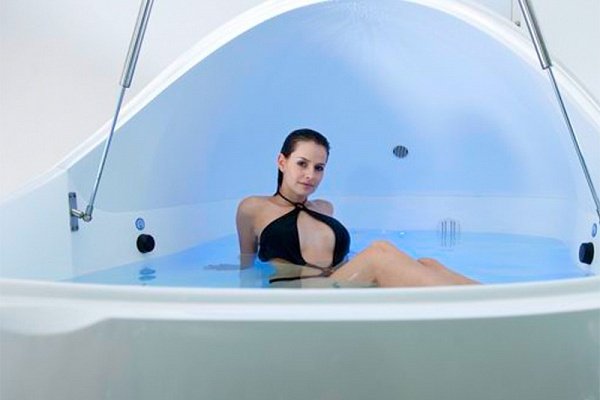31 July 2024, by Tim Strudwick
In the quest for peak performance, professional athletes are constantly seeking new ways to enhance their physical and mental capabilities. Among the many tools available, one stands out for its unique ability to rejuvenate both the body and mind: the floatation tank. This intriguing piece of equipment is rapidly gaining popularity in the world of sports, and for good reason. Floatation tanks offer a wide array of benefits that can give athletes the competitive edge they need to perform at their best.
What is a Floatation Tank?
A floatation tank, also known as an isolation or sensory deprivation tank, is a soundproof, lightless chamber filled with water and a high concentration of Epsom salts (magnesium sulfate). The density of the water allows individuals to float effortlessly on the surface, creating a sensation of weightlessness. The tank is designed to eliminate external stimuli, providing a space where the mind and body can fully relax and unwind.
The Science Behind Floatation Tanks
The therapeutic effects of floatation tanks are rooted in several scientific principles. First, the absence of gravity allows the muscles and joints to decompress, relieving pressure and reducing muscle tension. The magnesium in the Epsom salts is absorbed through the skin, which can help reduce inflammation, improve circulation, and promote faster muscle recovery. The sensory deprivation aspect of the tank induces a deep state of relaxation, which can lower cortisol levels (the stress hormone) and enhance mental clarity.
Recovery and Rehabilitation: Faster Healing, Better Performance
For professional athletes, recovery is just as crucial as training. Floatation tanks offer a powerful recovery tool by accelerating the body’s natural healing processes. The weightlessness experienced in the tank relieves pressure on the musculoskeletal system, which can be particularly beneficial after intense workouts or competitions. By reducing the strain on muscles and joints, floatation sessions can alleviate soreness and help prevent injuries.
Furthermore, the magnesium sulfate in the water aids in muscle recovery by reducing inflammation and flushing out lactic acid, which accumulates during strenuous exercise. This can lead to faster healing of micro-tears in the muscles, enabling athletes to return to training with less downtime.
Mental Resilience: Enhancing Focus and Reducing Stress
In addition to physical recovery, mental resilience is a key component of athletic success. The mental demands placed on professional athletes—whether dealing with the pressure of competition, maintaining focus, or overcoming setbacks—can be overwhelming. Floatation tanks provide an environment that fosters deep mental relaxation, helping athletes to manage stress and improve their mental game.
During a float session, the brain is freed from processing external stimuli, which can lead to a state of deep meditation. This can enhance mindfulness, reduce anxiety, and improve mental clarity. Regular floatation therapy has been shown to help athletes manage stress more effectively, maintain focus under pressure, and improve sleep quality—all of which are critical for peak performance.
Visualization and Mental Conditioning: Building the Winning Mindset
Visualization is a powerful tool used by many elite athletes to enhance performance. By mentally rehearsing their sport, athletes can improve their skills, build confidence, and prepare for competition. The sensory deprivation provided by a floatation tank creates the perfect environment for visualization. In the tank’s quiet and distraction-free space, athletes can focus intensely on their mental imagery, making their visualizations more vivid and effective.
This practice not only helps in refining technique but also in reinforcing the mental conditioning needed to succeed. It allows athletes to mentally “practice” without the physical wear and tear, ensuring that both mind and body are in sync when it’s time to compete.
Case Studies: Success Stories from the Sports World
Many high-profile athletes have turned to floatation therapy as part of their training regimen. For example, NFL quarterback Tom Brady has publicly endorsed the use of floatation tanks, crediting them with helping him maintain peak physical condition throughout his career. Basketball star Steph Curry is also known to use floatation therapy to aid in his physical recovery and mental preparation before games.
While not a UFC fighter, Joe Rogan—a prominent UFC commentator, comedian, and host of “The Joe Rogan Experience” podcast—is a strong advocate for floatation therapy. Rogan has frequently discussed its benefits, emphasizing how it helps with mental clarity, stress reduction, and overall well-being. His promotion of floatation tanks has played a significant role in bringing this therapy into the mainstream, especially among athletes and those seeking to enhance their mental and physical performance.
These figures, known for their relentless pursuit of excellence, have found that floatation therapy provides a unique and effective way to manage the demands of their respective fields. By integrating floatation sessions into their routine, they have been able to enhance their physical recovery, sharpen their mental focus, and sustain high levels of performance over the long term.
Conclusion: An Essential Tool for Peak Performance
In the competitive world of professional sports, where even the smallest advantage can make a significant difference, floatation tanks offer a holistic approach to achieving peak performance. By combining physical recovery with mental conditioning, floatation therapy addresses both the body and the mind, ensuring that athletes are at their best when it matters most.
For athletes seeking to elevate their game, incorporating floatation therapy into their routine can be a game-changer. Whether it’s accelerating recovery, reducing stress, or enhancing mental clarity, the benefits of floatation tanks are clear. As more athletes discover the power of this unique therapy, it is likely to become an essential tool in the arsenal of those striving for greatness. So, if you’re looking to unlock your full potential and achieve peak performance, a floatation tank might just be the key.






